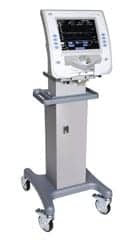According to a new report from MarketsandMarkets, the diagnostic imaging market is expected to reach $36.43 billion by 2021, at a compound annual growth rate (CAGR) of 6.6% from 2016 to 2021.
A number of factors are expected to drive the growth of diagnostic imaging market, such as: increasing investments, funds, and grants by government bodies for modernization of imaging facilities; increasing investments from public-private organizations; growth in the number of diagnostic imaging centers; rising prevalence of cancer; increasing geriatric population and the subsequent growth in the incidence of various diseases; technological advancements in diagnostic imaging modalities; and increasing preference for minimally invasive treatments.
However, factors such as the high cost of diagnostic imaging systems, technological limitations associated with standalone systems, unfavorable healthcare reforms in the United States, and the shortage of helium are expected to restrain the growth of this market to a certain extent.
On the basis of product, the market is segmented into x-ray imaging systems, CT scanners, ultrasound imaging systems, magnetic resonance imaging (MRI), and nuclear imaging systems. Each modality is further divided into sub segments.
The x-ray and ultrasound systems market is divided on the basis of technology and portability; whereas, CT scanners are segmented by slice type. MRI systems are divided on the basis of architecture and field strength and the nuclear imaging systems market is categorized into SPECT and hybrid PET systems. These systems are further divided into standalone and hybrid modalities.
Based on application, the market is segmented into Ob/Gyn health, orthopedics and musculoskeletal, neurology and spine, cardiovascular and thoracic, general imaging, breast health, and others. Based on end user, the market is segmented into hospitals, diagnostic imaging centers, and other end users (including pharmaceutical and biotechnology companies, academic and research centers, sports academies, and CROs).
Geographically, North America is expected to hold the largest share of the market in 2016, followed by Europe. However, the Asia-Pacific market is expected to register the highest CAGR during the forecast period.
Factors such as increasing incidence of chronic diseases, rising awareness of the benefits of early disease diagnosis, development of new healthcare facilities, growing medical tourism in APAC countries, and increasing government initiatives for the modernization of healthcare infrastructure are driving the growth of the market in the Asia-Pacific region.
For more information, visit MarketsandMarkets.





